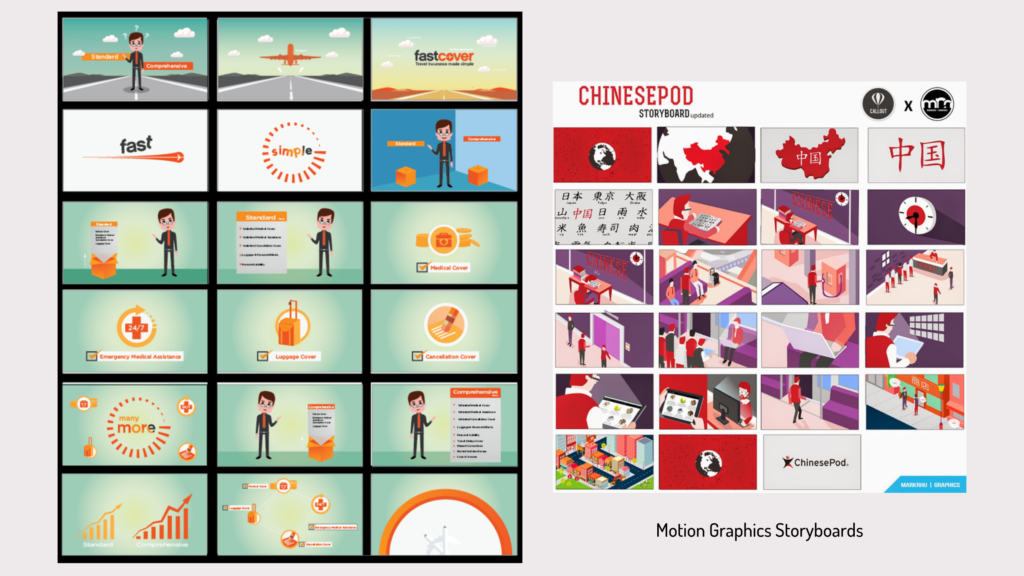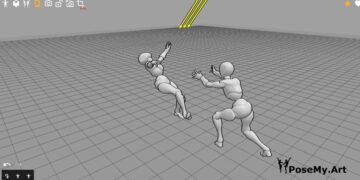Storyboarding is arguably the most crucial step in any kind of project, whether that project is a 2D project of some kind or not. It is quite unnerving to start working on a 2D animation project, a video game or even a comic book only to end up finding fundamental mistakes in the way your project is structured and then have to re-draw, reanimate or rebuild your project.

Not only that, but it would cost a fortune, and if you have some kind of publisher or financial entity that supports your work, you would have to answer for that, and in some cases lose funding, and no one wants that! What’s the best, most effective thing to avoid that? Storyboarding is your hero.
What is Storyboarding?

Okay, now that we have established that storyboarding could very well save your project from ruin, let’s go into detail on what it is. Let’s start with the basics. According to Merriam-Webster “Storyboard” means:
“A panel or series of panels on which a set of sketches is arranged depicting consecutively the important changes of scene and action in a series of shots (as for a film, television show, or commercial)”
So, storyboards are the way for you to plan out the most important story beats, key frames and everything that is important in your story, so that you have a basic structure and know where everything will go.
This way once you start working on your project, not only do you have a concrete vision on how everything will play out, but you are less prone to falling into the trap of investing precious time and money on a scene, or plot line that will not work in the medium you’re working in.
Storyboards do not have to be incredibly detailed to the point of having nothing thought out, but they also can.

Alyssa Maio writes in an article for Studiobinder
“Alfred Hitchcock was notorious for his ‘boards’ … He was so detailed … that actually shooting the film was boring.”
And although this is an example from the practice of storyboarding for films, do not be fooled, the process of making storyboards is similar across all mediums, that is how powerful storyboarding is in creation.
When you think about, any work of art whether movie, animation, comic, manga or even commercials, tell a story, and so making boards for that purpose, to be able to tell the story with every detail in mind is a great way to deliver a product with depth, where every detail is well thought out and accounted for.
How to make a storyboard?

There are plenty of storyboarding software that can help you bring your vision to life. It is worth noting that a storyboard can be virtually made in any software that has a pen tool and a canvas and layers. Or even on sketchbooks or random pen and paper. Due to the open nature of storyboarding, it can be achieved by rudimentary means.
However, with today’s advancement and accessibility to knowledge, there are many storyboard software that you don’t have to pay a dime for, you just need your computer and a graphics tablet.
Storyboarding examples
1. Films & Movies

We have to talk movies and films when talking storyboarding, either 2D animated films, 3D movies or others. The storyboard of Rian Johnson’s 2019 Knives Out is a great example of how storyboards can be a great tool despite their simplicity. If that is not the funniest thing you have ever seen, what is?
No but seriously, the director was able to explain how things will be set out in that scene and give a general idea for his vision, without having to waste time on filming it and then perhaps not liking it.

With something like a movie the style can also be somewhat realistic to reflect the medium properly, if we take the storyboards of Stanley kubrick’S 1980 The Shining or James Cameron’s Oscar winning masterpiece, Titanic, we see that they tend to ‘look’ realistic, with some even going for collages rather than hand-drawn storyboards.
It all makes sense considering that they are movies, so no drawing style is required to set the tone, but perhaps the style here leans more into color, composition, shot positioning among many other things.
2. 2D Animation

For something that is in our domain, the storyboards in 2D animation are a masterclass in storyboarding. They are a lot more detailed and thorough than other storyboards, which makes sense as they are made by artists or people in the creative field. And these storyboards help the team explore different ways of telling the story and other aspects of animation before committing to them and wasting time if they end up not being good enough.
Let’s take a look at some examples from the world of 2D. The storyboards of the Disney animation of Alice in Wonderland are quite detailed and actually quite aesthetically pleasing to look at. These storyboards could have very well aided the artists in defining the style of the animation to set the tone for it. A movie about magic hidden places and an adventurous girl full of life, of course there are going to be round shapes and a very wavy pattern to the world. This might have not been clear had the artists not done some storyboarding.
Same thing goes for the same company’s Cinderella animation and its storyboarding, the style seems to be established in them and every line is done with intention. And although most of those storyboards seem to be done in pencil lined and shaded, the beauty of the theme of these movie shows, no, shines through!
3. Video games

Somewhat of the same thing goes for video games, except a storyboard for one of the newer Resident Evil games, Resident Evil 2019 for instance, will be of a night and day difference in comparison to something, say like Kena Bridge Of Spirits.
This really shows how storyboarding can also help the creators of the game project figure out the style and tone of their project on top of the shots, and how the story is presented.
And to elaborate on this further, video games are becoming more and more akin to movies in the way their narrative is presented, they use voice actors and actors in motion capture suits and have them act out the scene to get the desired and most realistic body movement and voice acting. Reshooting this can be time consuming AND expensive as heck, so storyboarding these sequences can be a very helpful step to avoid any problems before they even occur.
4. Advertisement

Another use for storyboarding in the same vein is how, as a freelance artist, you can present many different ideas and approaches to whatever is commissioned of you, say for example your client asked you to make a short motion graphics animation to demonstrate something or used to advertise something.
Instead of wasting your precious time and effort on something that the client might want to change and alter completely, you get to explore with them many different ideas by storyboarding and have them choose what they like.
This isn’t a fool proof way of avoiding spending precious time on something that’ll never see the light and might be scraped but it sure saves you the possibility of it falling into that more than not.
5. Comics and Manga

Just because we mentioned productions that are ‘animated’ doesn’t mean that storyboarding is strictly related to animated movies, films and cartoons. You can very well storyboard your comic and manga before fully committing to starting to polish anything, which is as much of an important step in comics and manga as it is in animated movies and films.
It all boils down to having a space provided by storyboarding where you can explore ideas and paths your work can take without risking any time or effort. It’s worth noting that most comic creation software allow you to make storyboards before moving on to the next steps of the process.
Conclusion
So the conclusion to this is that storyboards can be used in pretty much any production, whether movie, animation movie, cartoon, and even commercials and pretty much any style, whether simplistic like that one knives out a scene, or fully fledged such as the ones in Spirited Away or something in between.
The only goal here is to be able to plan out your shots, scenes and everything so that you could explore different methods of execution and pick the most suitable without wasting precious time and resources.
With that said, we hope you enjoyed this post and that it has given you the information you need to be more informed and educated about storyboarding. Is storyboarding for you? Or are you more a ‘let me just do this on the fly and hope for the best’ kind of person? Let us know down below!






























